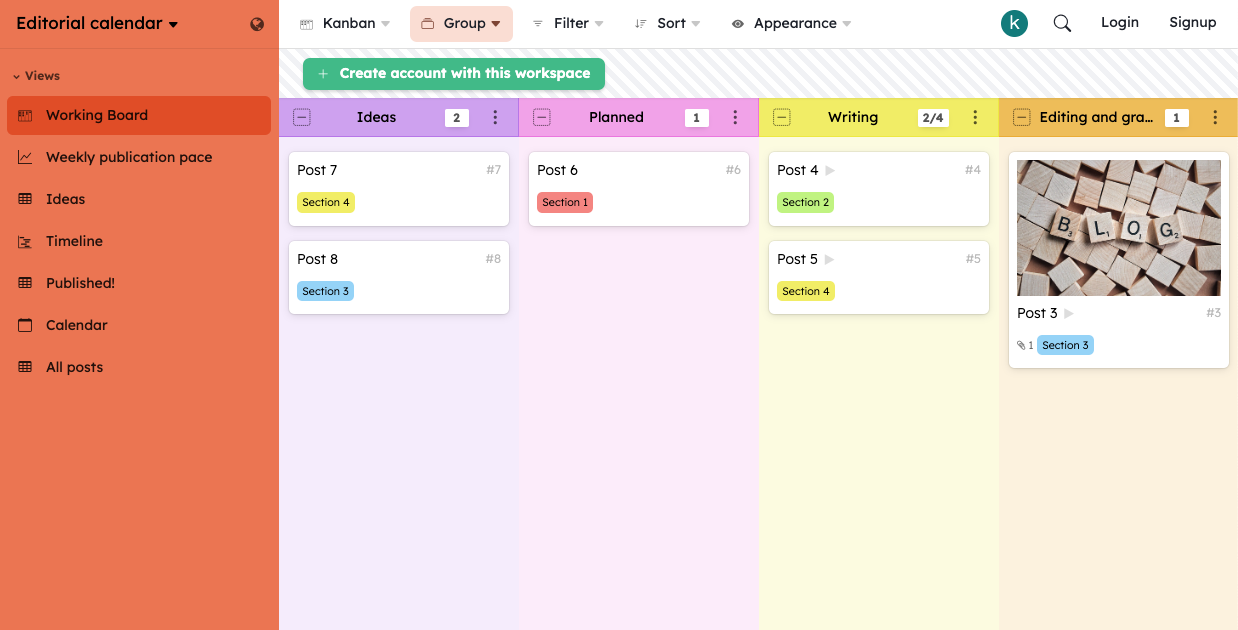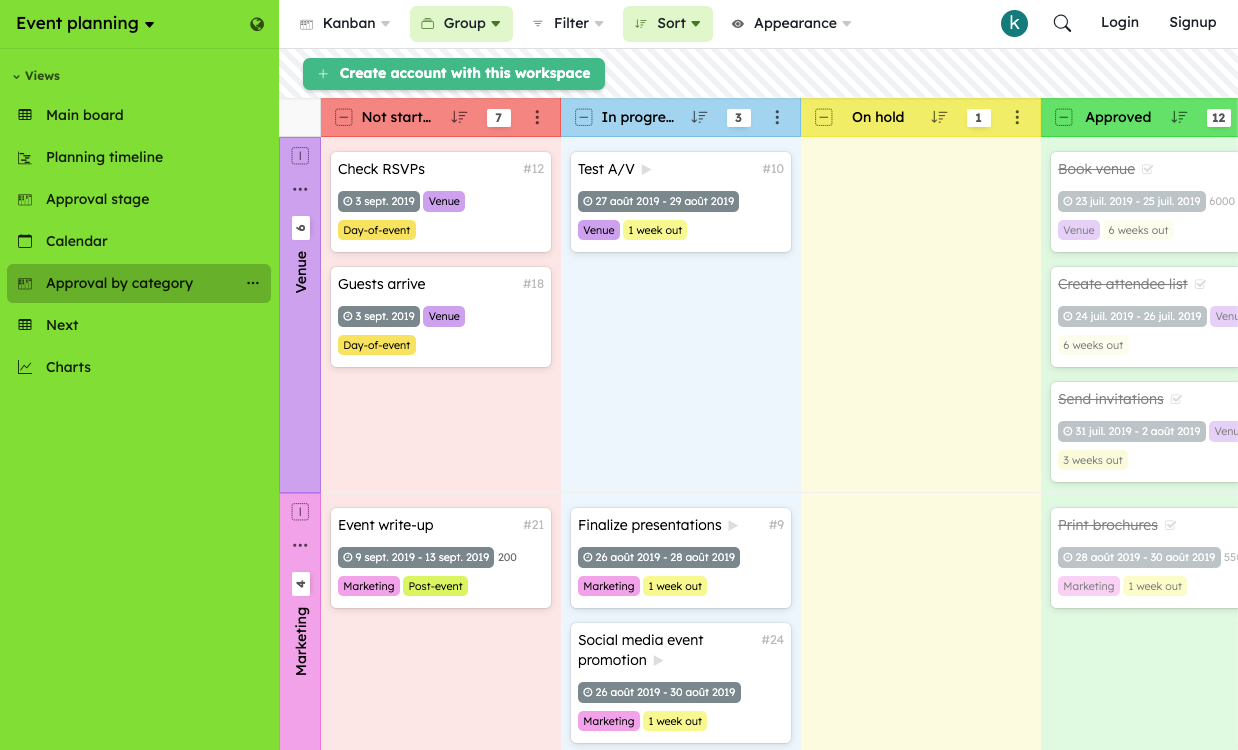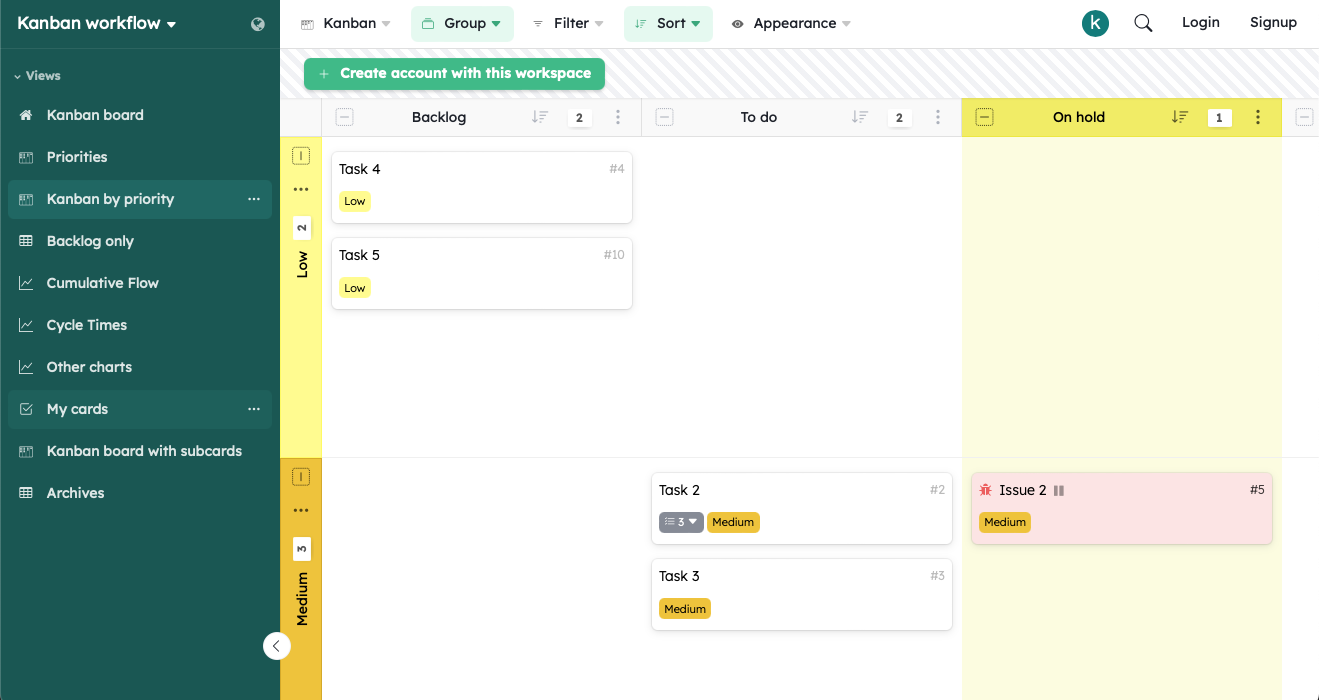How to create a reverse planning? Steps and our templates

TL;DR
• Reverse planning is a backward planning method that starts from the end date to organize all project steps
• This approach ensures deadlines are met by precisely identifying each necessary task
• Key steps include: defining the deadline, breaking down the project, estimating durations, planning dependencies, and adding buffers
• Kantree offers advanced features to optimize your reverse planning
Reverse planning has become essential in modern project management. Whether you’re managing a marketing campaign, an event, or product development, this backward planning method allows you to structure your work starting from the deadline. Unlike traditional planning, reverse planning ensures deadlines are met while optimizing coordination between teams.
In this article, discover what reverse planning is, the key steps to build it effectively, as well as several ready-to-use templates. You’ll also see how Kantree, a collaborative project management tool, helps you create and track your reverse planning in an intuitive and efficient way.
Learn to transform your deadlines into success levers through a clear, visual, and agile method.
Table of Contents
- What is reverse planning?
- Steps to create effective reverse planning
- Visual example of reverse planning
- Our reverse planning templates to use
- Why Kantree is ideal for your reverse planning?
- Conclusion
- FAQ - Reverse Planning
What is reverse planning?
Reverse planning is a planning method that starts from the end date and works backward to the project start. Unlike traditional planning that progresses chronologically, this backward approach ensures that all milestones will be met to achieve the final objective on time.
This methodology is particularly effective for projects with fixed and non-negotiable deadlines. Starting from the deadline, you precisely identify each necessary step and the time required for each one. Reverse planning thus guarantees better control of deadlines and optimal organization of resources.
Why use reverse planning?

Using reverse planning offers many advantages for project management. This method first allows you to clearly visualize the critical path between the starting point and the final objective. You immediately identify tasks that cannot be delayed without compromising the entire project.
Reverse planning also improves communication within teams. Each member perfectly understands their role and the deadlines to meet. This clarity reduces the risk of misunderstandings and optimizes coordination between different stakeholders. Additionally, this approach facilitates anticipation of potential problems and allows implementation of preventive solutions.
Steps to create effective reverse planning
To create effective reverse planning, you must start by clearly defining the final objective. This structured methodology in several steps guarantees rigorous and realistic planning of your project.
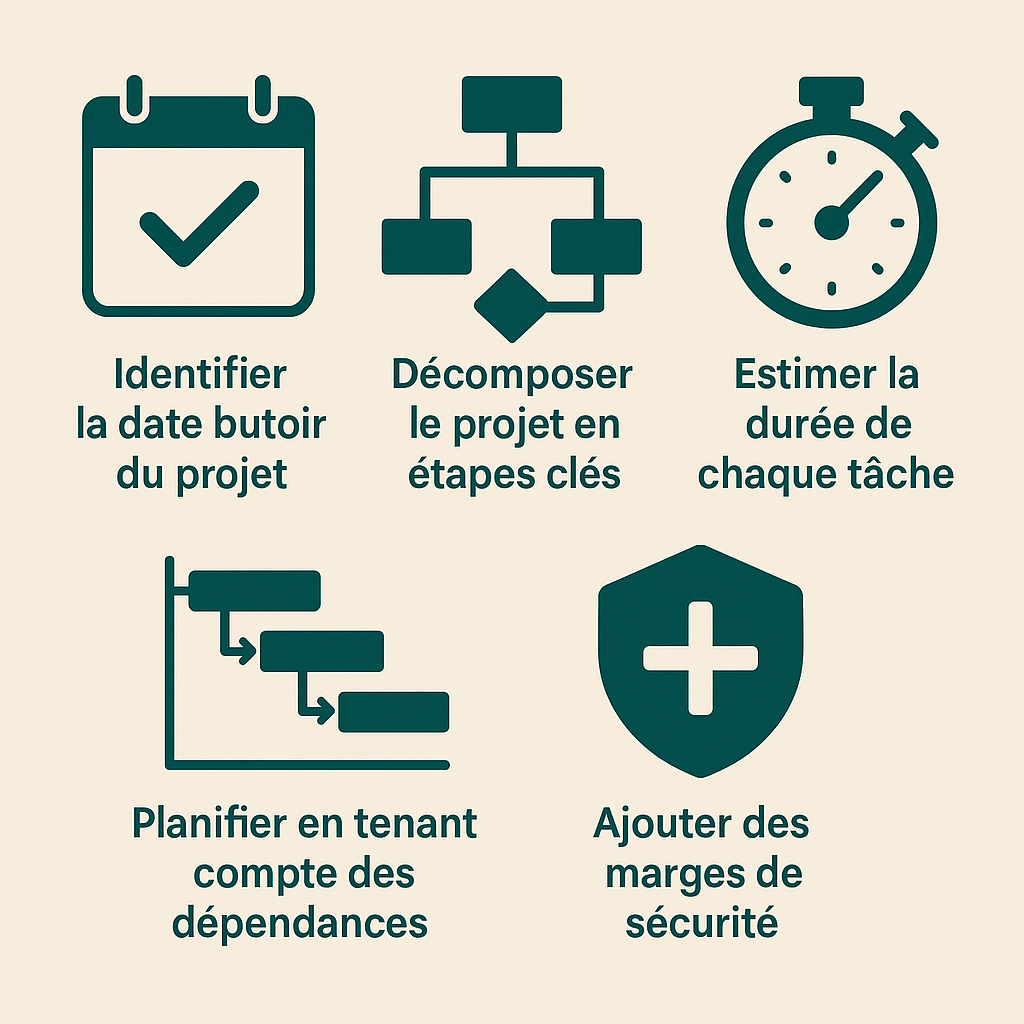
1. Identify the project deadline
The first step is to precisely define the end date of your project. This deadline must be realistic and account for all external requirements. Whether it’s a product launch, an event, or a marketing campaign, this deadline becomes the reference point of your entire reverse planning.
It’s essential to validate this date with all stakeholders before proceeding. Once set, it will condition your entire backward planning. Also make sure to account for calendar constraints like weekends, holidays, or vacation periods that could impact your schedule.
2. Break down the project into key steps
Once the deadline is established, break down your project into major phases or milestones. This approach allows you to logically structure all necessary activities. Each step must correspond to a concrete and measurable deliverable.
Start by identifying main phases working backward from the final objective. For example, for a product launch, you might have: final validation, testing, production, development, design. This breakdown helps you visualize the logical sequence of activities and identify dependencies between different phases.
3. Estimate the duration of each task
Accurate duration estimation is one of the most critical aspects of reverse planning. For each identified task, evaluate the necessary time based on your past experience and available resources. Don’t hesitate to consult experts in each field to obtain realistic estimates.
Use proven estimation techniques like the three-point method (optimistic, pessimistic, realistic) to refine your forecasts. Document your assumptions and factors influencing these durations. This documentation will be valuable for adjusting your schedule if necessary.
4. Plan considering dependencies
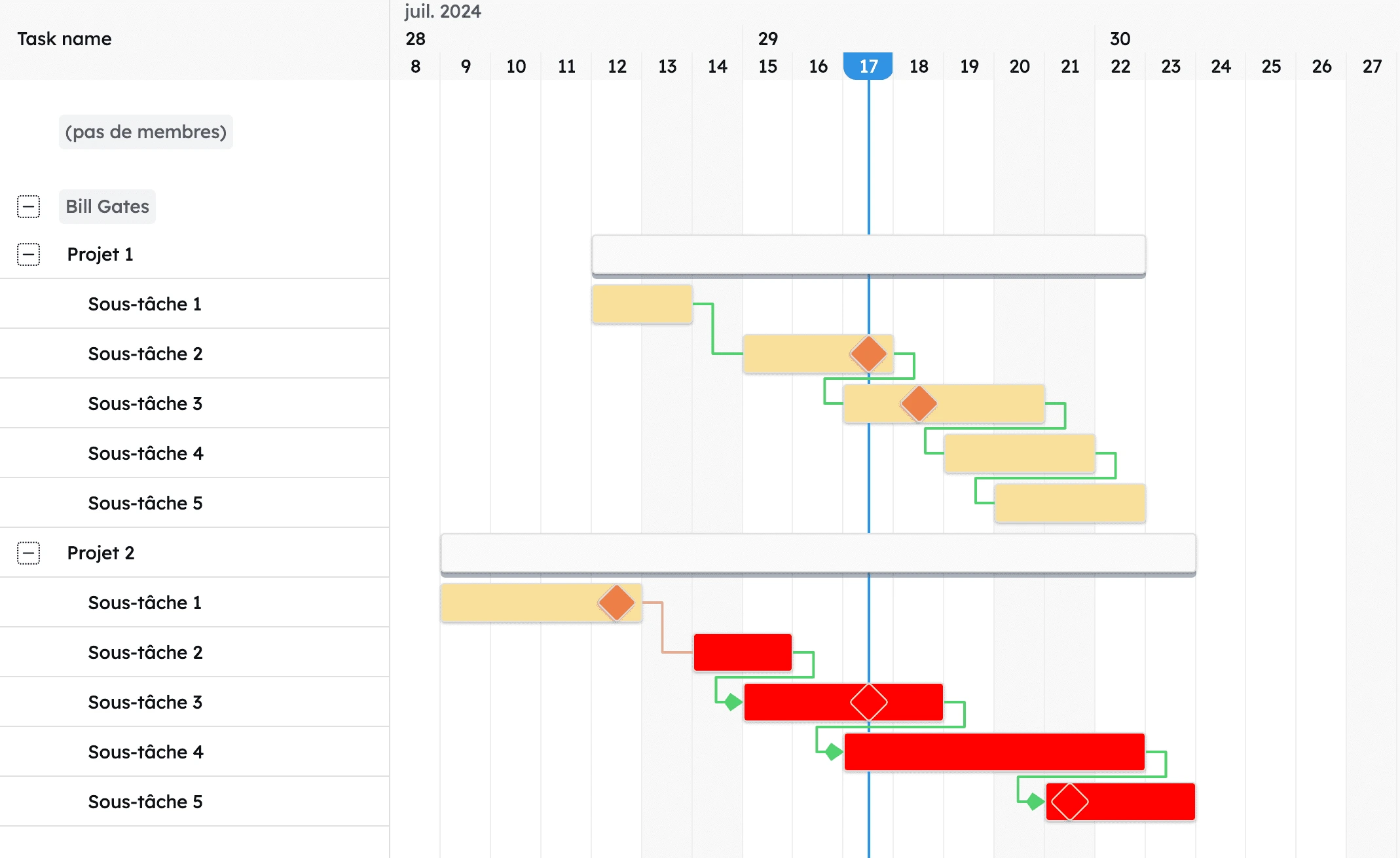
Carefully identify dependencies between different tasks in your project. Some activities cannot start until other steps are completed. These dependency links determine the critical path of your reverse planning.
Map these relationships to understand which tasks can be conducted in parallel and which must necessarily follow each other. This analysis allows you to optimize the use of your resources and identify potential bottlenecks. External dependencies, such as client validations or supplier deliveries, deserve special attention.
5. Add safety buffers
Integrate safety buffers into your reverse planning to deal with unforeseen events. These time buffers protect you against delays and unexpected complications. The size of these buffers depends on the level of risk and uncertainty of each phase.
Distribute these buffers strategically, favoring the most critical or uncertain steps. A buffer of 10 to 20% of total time is generally recommended, but this proportion may vary depending on the complexity and stakes of your project. These buffers should not be seen as wasted time, but as an investment in your project’s success.
Visual example of reverse planning
A concrete reverse planning example will help you better understand this methodology. Let’s take the case of a product launch scheduled for December 15. Working backward from this date, we identify the following steps:
- December 15: official launch
- December 1: finalization of communication
- November 15: quality test validation
- November 1: production start
- October 15: prototype validation
- October 1: development start
This reverse chronological visualization allows you to immediately see if the schedule is realistic. In this example, if we’re already on October 5 and development hasn’t started, we know the December 15 objective is compromised. Reverse planning thus instantly reveals gaps and allows strategy adjustment.
Our reverse planning templates to use
Using a reverse planning template greatly facilitates implementing this approach. We offer three templates adapted to the most common needs, which you can customize according to your specific projects.
Template 1: Marketing reverse planning
☝️ Click on the image above to get your template directly.
Marketing reverse planning is particularly useful for campaigns with fixed launch dates. This template integrates all typical phases of a campaign: strategy, creation, production, testing, deployment, and analysis. It accounts for validation deadlines, creative production cycles, and media constraints.
This template includes specific milestones such as creative concept validation, support finalization, A/B testing, and going live. Safety buffers are particularly important for creations requiring multiple iterations. An Excel reverse planning remains one of the most accessible solutions to start with this type of template.
Template 2: Event reverse planning
☝️ Click on the image above to get your template directly.
In the event sector, event reverse planning ensures all elements are ready on time. This template covers venue search, logistics, communication, speaker management, and technical coordination. Dependencies are particularly numerous in this field.
The event template integrates regular checkpoints and contingency plans for critical aspects. It accounts for booking deadlines, technical constraints, and administrative validations. Coordination with external providers requires special attention in this type of reverse planning.
Template 3: Generic project reverse planning
☝️ Click on the image above to get your template directly.
This versatile template adapts to most cross-functional projects. It structures classic phases: initiation, planning, execution, control, and closure. Each project reverse planning must be adapted to the specificities of the initiative concerned, but this template provides a solid foundation.
The generic template emphasizes risk management and communication. It integrates regular validation points and escalation mechanisms in case of problems. Many free reverse planning templates are available online to inspire you and customize your approach.
Why Kantree is ideal for your reverse planning?
Choosing the right reverse planning tool is crucial for your planning success. Kantree offers Kantree features specifically designed to optimize this methodology:
• Intuitive backward planning: easily create your reverse planning starting from the end date
• Advanced dependency management: visualize and manage links between all your tasks
• Real-time collaboration: work as a team on your schedule with instant updates
• Customizable templates: use our ready-to-use templates or create your own
• Automatic milestone tracking: receive alerts to meet your critical deadlines
• Complete integration: connect Kantree with your other work tools
• Progress reports: track your project progress in real time
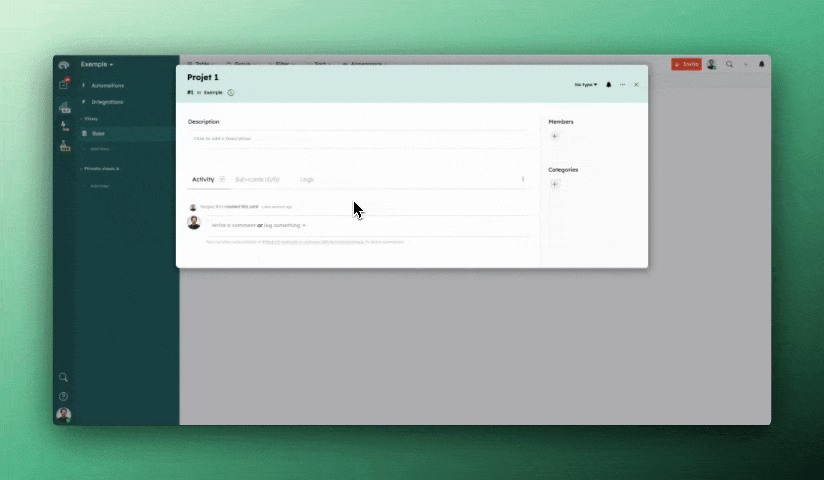
As a complete project management software, Kantree allows you to choose its Gantt feature facilitates visualization of your backward schedule, just as you would how to create a Gantt chart traditional.
Conclusion
Adopting reverse planning in your organization means choosing a strategic planning approach that promotes rigor, visibility, and deadline compliance. Starting from your final objective, you anticipate constraints, prioritize priorities, and gain collective efficiency.
Thanks to a reverse planning tool like Kantree, you can go even further: plan your projects backward, visualize dependencies between tasks, collaborate in real time, and adjust your schedules in a few clicks. Whether you’re a project manager, marketing manager, or event coordinator, Kantree helps you maintain control over each step and deliver your projects on time.
FAQ - Reverse Planning
What’s the difference between planning and reverse planning?
The main difference lies in the planning direction. Traditional planning starts from the present and progresses toward the future, defining steps in chronological order. Reverse planning, on the other hand, starts with the final objective and works backward to the current starting point.
This backward approach has the advantage of ensuring that all necessary milestones are identified to achieve the objective within deadlines. Traditional planning is more likely to experience time drift, as it doesn’t start from a fixed time constraint. Reverse planning is therefore better suited to projects with non-negotiable deadlines.
How to adapt reverse planning to your sector (marketing, HR, events)?
Each sector has specificities that influence the structure of reverse planning. In marketing, creative validation cycles and media constraints determine milestones. Campaigns require testing and optimization phases that must be integrated into backward planning.
In human resources, recruitment or training processes follow regulatory steps with incompressible deadlines. Reverse planning must account for notice periods, mandatory training, and hierarchical validations. In events, coordination with numerous providers and complex logistical constraints complicate backward planning.
How to create reverse planning?
Learning how to create reverse planning requires mastering a few essential steps. Always start by precisely defining your final objective and its deadline. This step conditions your entire backward planning.
Next, break down your project into main phases, then into detailed tasks. Estimate the duration of each activity by consulting the relevant experts. Identify dependencies between tasks and plan accordingly. Don’t forget to add safety buffers to deal with unforeseen events. Finally, use an appropriate tool to visualize and track your reverse planning throughout the project.
To go further
3 possibilities are available to you if this topic interests you:
-
1
Try Kantree here, it is free and you don’t need any credit card
-
2
If you want to learn more about how Kantree can adapt to your challenges, make an appointment with an expert on your use case.
-
3
Are you willing to join +1500 professionals receiving our advices and news on digitalization, collaboration, productivity? Register to our newsletter here.
If this article has been useful to you, consider sharing it. You can do it easily below.
